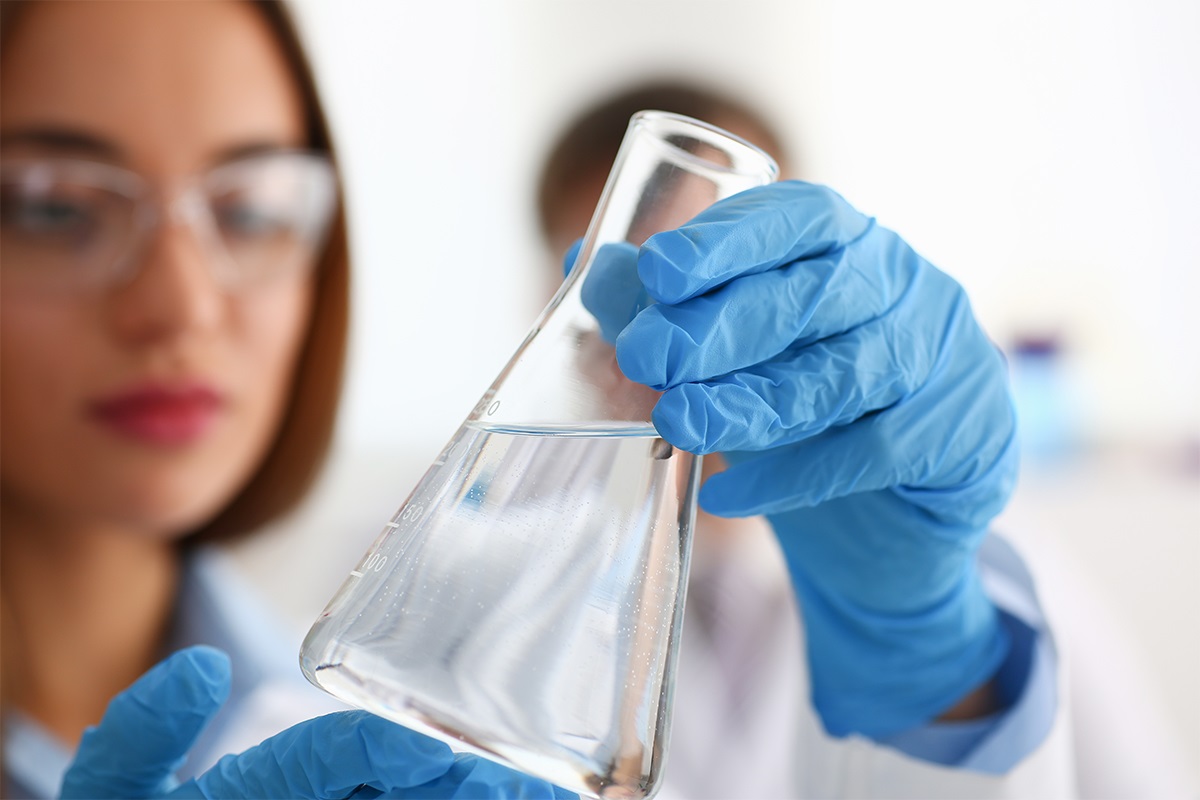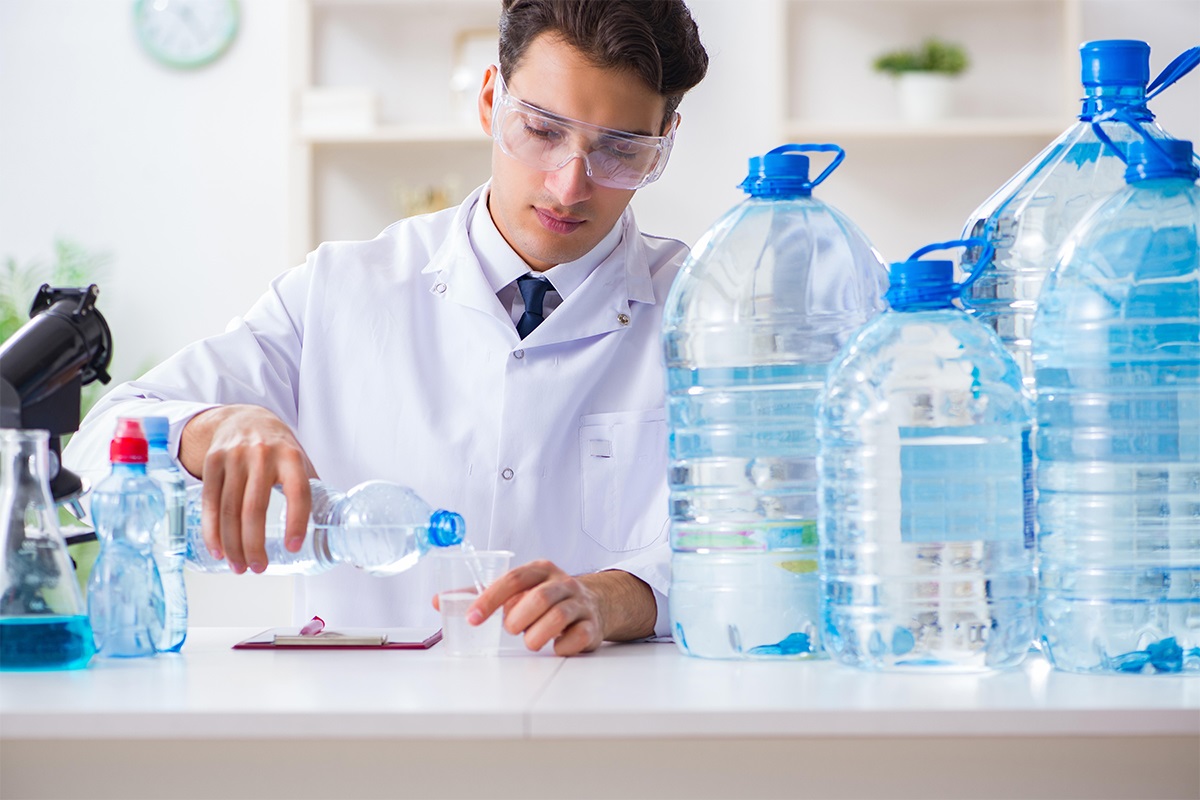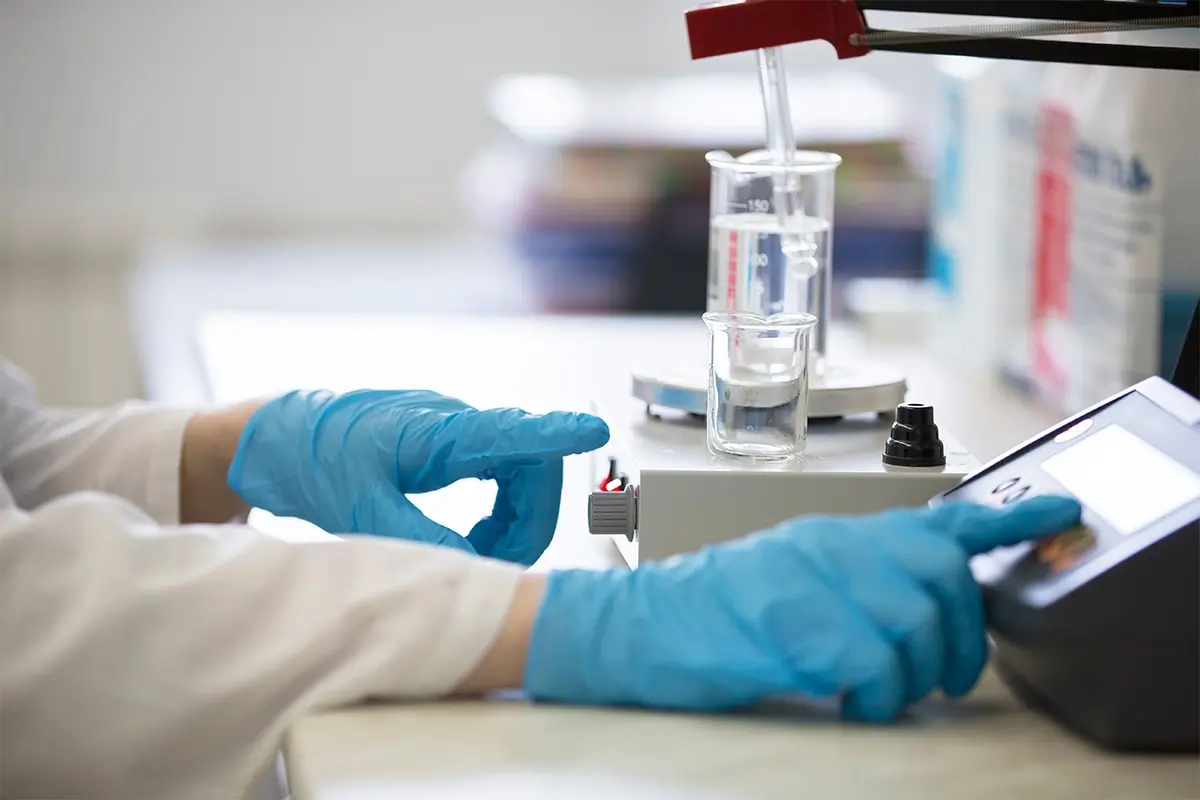Choosing the precise water testing tools is critical for assuring the safety and purity of drinking water, as well as for a variety of environmental and industrial applications. There are various methods for testing water, and the method you choose relies on the precise parameters and toxins you need to analyze. Below is a comparison of some typical water testing methods, showing their advantages and disadvantages.
A. Chemical Testing of Water
Colorimetry: The color changes caused by chemical interactions between water samples and reagents are measured using this method. It is simple and inexpensive, making it appropriate for a wide range of characteristics.

Nitrate: The colorimetric nitrate test measures nitrate levels in water testing. Nitrate ions are reduced to nitrite ions, which react with an aromatic amine to form a diazonium salt. This salt reacts with N-(1-naphthyl)-ethylenediamine to form a red-violet azo dye. The color intensity indicates the nitrate and nitrite levels. The test is used for drinking water, wastewater, and seawater.
Methylene Blue Active Substances (MBAS) Test: This test detects anionic surfactants in water testing. The test uses methylene blue, which reacts with surfactants to form a colored solution. The color intensity indicates the surfactant concentration. This test is used for various water samples, including drinking water.
Nitrite test: The colorimetric nitrite test determines nitrite levels in water. Nitrite ions react with sulfanilamide to form a diazonium salt, which reacts with N-(1-naphthyl)-ethylenediamine dihydrochloride to form a colored azo dye. The color intensity corresponds to the nitrite levels. This test is used for drinking water testing, wastewater testing, and seawater testing.
Sulphate Test: The sulphate test in drinking water measures sulphate levels. Sulphate ions react with barium chloride to form a precipitate of barium sulphate. The turbidity of the solution, measured using a spectrophotometer, indicates the sulphate concentration. This test is used for various water samples testing
Cyanide Test: The Cyanide test in drinking water detects cyanide levels. Cyanide in water reacts with specific reagents to form a colored solution. The color intensity, measured using colorimetry, indicates the cyanide concentration in the water sample. This test is used for various water samples, including drinking water testing
Titration
Titration is the process of adding a reagent to a water sample until a chemical reaction occurs that indicates the quantity of a certain component. Thus, acidity, alkalinity, anionic surface, Ca, Cl, N, NO3, NO2, CN, F, SO4, H2S, Mg, Cr+6, and mineral oil. Some of the chemical testing is given below:

Acidity Test: The Acidity test in drinking water measures the water’s capacity to neutralize a strong base to a designated pH.
Alkalinity Test: The alkalinity test measures the water’s capacity to neutralize acids, indicating its buffering capacity
Anionic Surface: Anionic surface tests in drinking water testing involve ion chromatography, which is used to monitor inorganic anions.
Calcium Test Calcium tests in drinking water can be performed using methods like spectrophotometry, reagent drops, test strips, and titration with EDTA solution
Nitrogen Test: Use Nessler’s reagent to perform a nitrogen test for titration in drinking water testing. The sample’s ammonia reacts, resulting in a brownish-yellow colour. Titrate to detect ammonia concentration, which is essential for determining water quality. The results are given in milligrams per liter. This test confirms that regulatory standards for safe drinking water are met
Chloride Test: The chloride test in drinking water is used to determine the amount of chloride ions (Cl) in the water. Chloride is a naturally occurring ion that is present in water, but elevated amounts might indicate contamination or other problems.
Fluoride Test: To assess fluoride levels in drinking water using titration, employ a fluoride ion-selective electrode or a colorimetric method. The latter involves titration with a standardized solution and a specific indicator. Results, expressed in milligrams per liter, are crucial for monitoring water quality and ensuring compliance with regulatory standards for safe consumption.
Magnesium (Mg) Test: Use a suitable indicator or chelating agent, such as ethylenediaminetetraacetic acid (EDTA), to assess magnesium (Mg) levels in drinking water via titration. Titrate with a standardized solution until the color changes to indicate the endpoint. The results, which are presented in milligrams per liter, help to provide a full assessment of water quality for safe consumption
Arsenic Test: Use particular reagents such as silver nitrate or iodine for arsenic testing in drinking water via titration. Titration estimates the quantity of arsenic after it interacts to generate a precipitate. The results, which are normally given in milligrams per litre, are critical for assuring water safety and regulatory compliance in order to protect public health
Total Hardness Test: Titration with ethylenediaminetetraacetic acid (EDTA) as a chelating agent is used to determine overall hardness in drinking water. Titrate with a standardized solution until the color changes to indicate the endpoint. The results are represented in milligrams per litre of calcium carbonate
B. Sensory Analysis of Drinking Water:
The sensory study of drinking water entails assessing its organoleptic qualities using human perception. Taste, odor, color, and texture are all important considerations. Consumers or trained panels may participate. This study confirms that water testing meets palatability standards, supplementing chemical tests for comprehensive water quality assessment and regulatory compliance.

C. Physio-Chemical Testing of Water:
The sensory study of drinking water entails assessing its organoleptic qualities using human perception. Taste, odor, color, and texture are all important considerations. Consumers or trained panels may participate. This study confirms that water testing meets palatability standards, supplementing chemical tests for comprehensive water quality assessment and regulatory compliance.

1. Turbidity Testing: The cloudiness or haziness of water is measured using this approach, which is often caused by the presence of suspended particles. Turbidity is an important metric for determining water quality. It’s easy to use and inexpensive, but it doesn’t provide information on specific contaminants.
2. Conductivity Testing: The ability of water to conduct electrical current is measured as conductivity, which is proportional to ion concentration. It can be used to measure overall water quality and can be a good predictor of contamination, but it cannot detect individual compounds.
D. Microbiological Testing of Water
Microbiological testing is required to detect coliform bacteria, which can suggest faecal contamination. Other microbial parameters that would ensure the safety and quality of the water include total plate count, yeast and mould, Coliform, Escherichia coli, faecal streptococci, Pseudomonas aeruginosa, Shigella spp., Staphylococcus aureus, sulphur-reducing anaerobes, Vibrio cholerae, Vibrio parahaemolyticus, etc. It can be used to assess the overall microbiological quality of water. According to the methodology and water testing requirements, the results are both quantitative and qualitative evaluations.
E. Instrumental Analysis of Water:
The sensory study of drinking water entails assessing its organoleptic qualities using human perception. Taste, odor, color, and texture are all important considerations. Consumers or trained panels may participate. This study confirms that water testing meets palatability standards, supplementing chemical tests for comprehensive water quality assessment and regulatory compliance.
1. Gas Chromatography-Mass Spectrometry (GC-MS):
The gas chromatography-mass spectrometry (GC-MS) technology detects and quantifies organic substances such as volatile organic compounds (VOCs) and semi-volatile organic compounds (SVOCs). It can identify pollutants such as pesticides and industrial chemicals in water testing.
2. Inductively Coupled Plasma-Mass Spectrometry (ICP-MS):
Because it can distinguish part per trillion or part per quatrillion level of arsenic and other metals, ICP-MS is used to detect and quantify trace metals and heavy metals in water testing. It is quite accurate and can identify a large variety of elements with high efficiency.
Traditional vs. Modern:
Which Water Testing Method is Right for You?
The optimal water testing method is determined by various aspects, including your application’s specific needs, available resources, and desired accuracy. Let’s compare classic and modern water testing methods to help you make an informed decision:
Traditional Water Testing Methods
Suitable For: These strategies have been around for a long time and are well-established. They are frequently appropriate for routine testing of fundamental water quality indicators. Colorimetry, titration, pH testing, and hand microbiological culturing (e.g., agar plates) are among the examples.
Cost-effective : Traditional methods are often less expensive to implement
Simplicity : They may require less specialized equipment and expertise.
Well-understood : These methods have a long history of use and documentation.
Limitations of Traditional Water Testing Methods:
Limited accuracy : Traditional methods may not provide the same level of precision and sensitivity as modern techniques
Limited scope : They are generally best for basic water quality parameters and may not detect a wide range of contaminants.
Time-consuming : Some traditional methods can be labor-intensive and time-consuming.
Advantages and limitation of Modern Water Testing:
High accuracy : Modern methods offer exceptional precision and sensitivity, enabling the detection of trace contaminants
Comprehensive analysis : They can detect a wide range of parameters, from organic compounds to heavy metals and pathogens
Real-time monitoring : Some modern methods provide immediate data, allowing for rapid response to changes in water quality
Limitations : Modern methods can be expensive to implement, requiring specialized equipment and trained personnel. It may necessitate a higher level of expertise and maintenance
Choosing the Right Method for Water Testing
Traditional methods of water testing may be sufficient if you’re in charge of monitoring a municipal water supply for fundamental quality criteria like pH, turbidity, and chlorine levels.

Modern technologies of water testing such as GC-MS or ICP-MS may be required if you need to detect trace quantities of specific contaminants such as pesticides or heavy metals, or if you’re doing water quality studies. Modern online monitoring systems or molecular biology techniques like PCR may be the best solution for continuous monitoring in industrial processes or real-time detection of hazardous microbes in drinking water testing.
Finally, the decision between conventional and modern water testing methods is influenced by your individual needs, budget, and the level of sophistication required for your application. A combination of old and modern approaches may offer the most comprehensive assessment of water quality testing in many circumstances.
Authors: Dr. Sanjoy Gupta, Bhaskar Ashish and Sajid Hussain
Reference:
- https://fssai.gov.in/upload/uploadfiles/files/Manual_Water_Analysis_09_01_2017(1).pdf
- https://www.usgs.gov
- https://link.springer.com/article/10.1007/s10661-011-2062-2
- https://www.agilent.com/cs/library/applications/5991-4938EN.pdf
- Ashbolt, N. J., Grabow, W. O., & Snozzi, M. (2001). Indicators of Microbial water quality. pp. 289–316.

